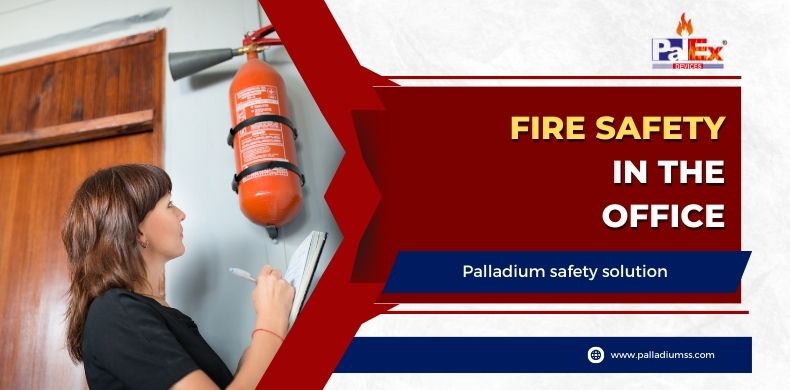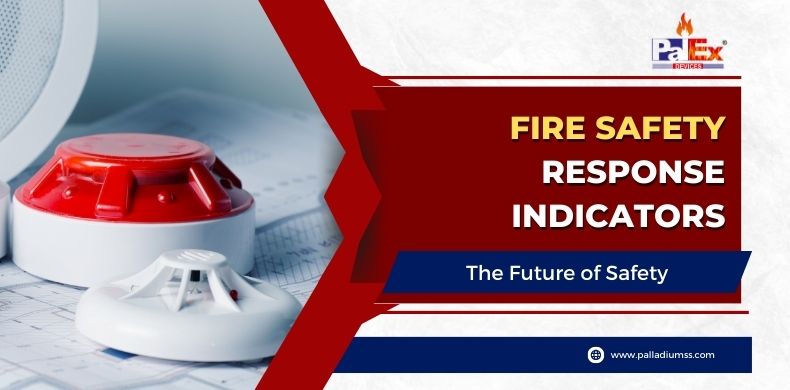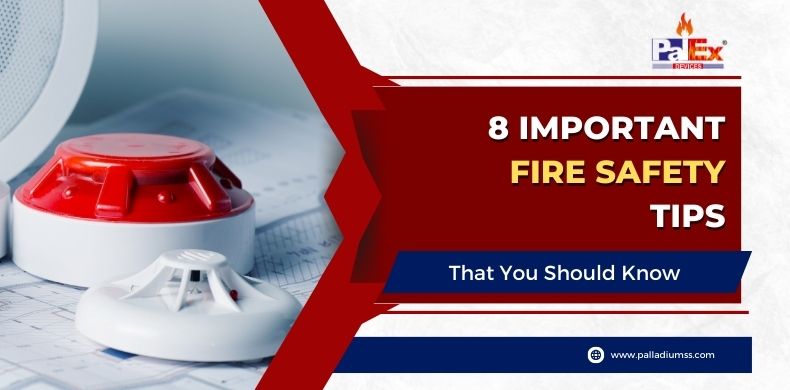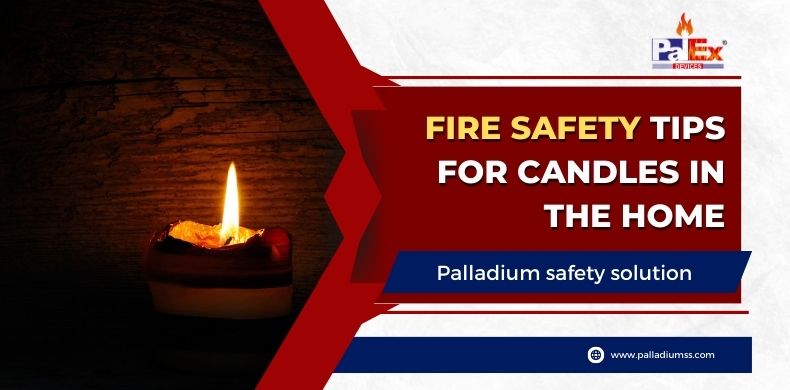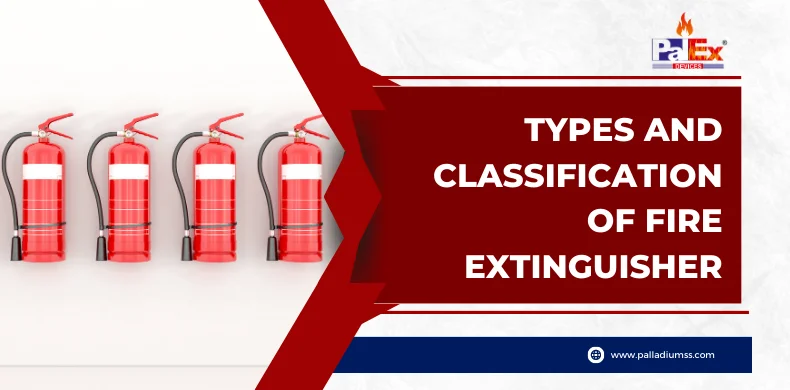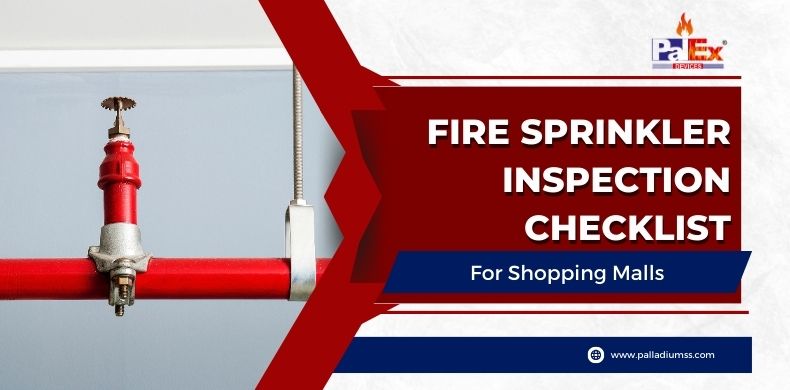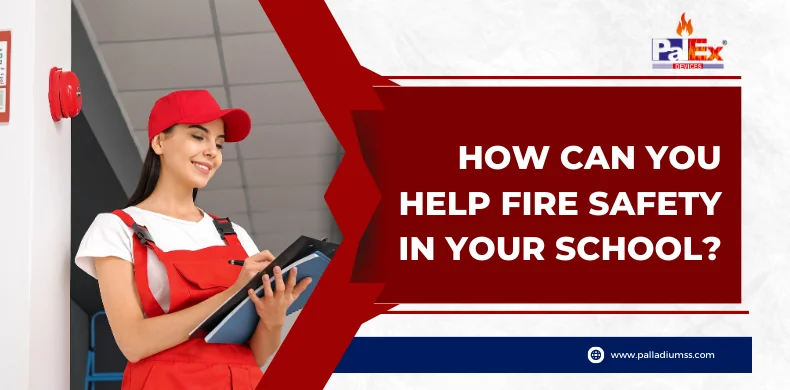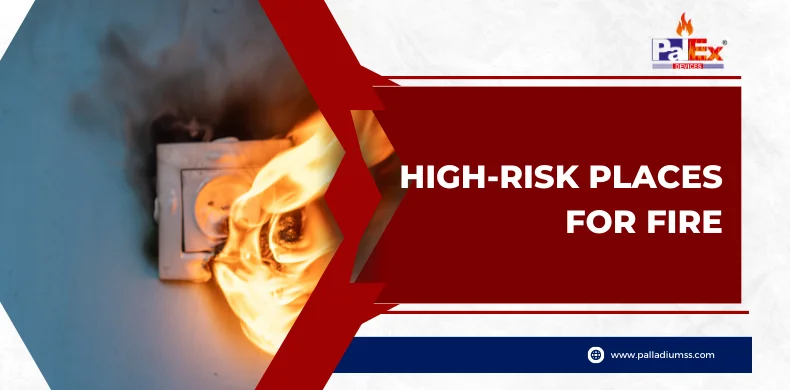When you are at work, you should remember to practice fire safety. It may be easy to forget about safety when you’re busy doing your daily tasks at work, but remembering safety is always essential. When it comes to fire safety in the office, a few Tips for Office Fire Safety should reflect.
Tips for Office Fire Safety
Make fire safety a priority in the workplace by encouraging your colleagues and employees to take action. Here are some tips for fire safety:
Individual Responsibilities:
Also read :10 Essential Fire Safety Tips For The Entertainment Industry
Conclusion
Promoting a culture of fire safety in the office not only mitigates risks but also instills confidence among employees, fostering a secure and proactive work environment.
Fire Safety Response Indicators: The Future of Safety
In today’s fast-paced world, the safety of our homes, workplaces, and public spaces remains a top priority. Fires pose a significant threat among various potential hazards, often resulting in devastating consequences.
Technological advancements and data-driven approaches, fire safety response indicators are emerging as a game-changer in our quest to mitigate fire risks and enhance emergency response efforts.
This blog delves into the concept of Fire Safety Response Indicators. It explores how they are shaping the future of safety.
Understanding Fire Safety Response Indicators
Fire Safety Response Indicators are advanced systems created to watch, analyze, and predict possible fire dangers instantly. These indicators use high-tech technologies like –
1. Artificial intelligence
2. Machine learning
The Internet of Things
Data analytics gather and handle vast amounts of information from different sources.
This information includes temperature, smoke density, gas levels, occupancy, and people’s behaviour.
Key Benefits and Features
1. Early Fire Detection: Traditional fire alarm systems often use smoke or heat detectors to identify fires. Fire Safety Response Indicators go beyond these conventional methods by utilizing sophisticated sensors and algorithms to detect anomalies, even before visible fire signs emerge.
This early detection significantly reduces response times, giving occupants more time to evacuate safely and firefighters a head start in controlling the blaze.
2. Predictive Analytics: One of the most exciting aspects of Fire Safety Response Indicators is their ability to analyze historical data and predict potential fire hazards.
By identifying patterns and trends, these systems can assess risks more accurately and proactively implement preventive measures.
3. Real-time Monitoring and Alerts: Fire Safety Response Indicators provide real-time monitoring of crucial parameters.
In case of any abnormality or potential fire hazard, these systems trigger immediate alerts to relevant authorities and building occupants, allowing for swift action.4. Integration with Building Management Systems: These indicators can seamlessly integrate with building management systems, enabling automatic responses such as closing fire-rated doors, activating fire suppression systems, and controlling elevators for safe evacuation.
5. Remote Monitoring and Control: Fire safety professionals and building managers can access the data and control the system remotely through secure online interfaces, ensuring continuous oversight even when physically distant.
The Impact on Fire Safety
Implementing Fire Safety Response Indicators has the potential to revolutionize fire safety practices.
Key ways in which they are transforming the landscape of fire safety:
1. Enhanced Emergency Response: These indicators’ real-time data and predictive capabilities empower emergency responders to make more informed decisions.
This, in turn, increases the effectiveness of firefighting efforts, ultimately saving lives and minimizing property damage.
2. Improved Evacuation Strategies: With early fire detection and prompt alerts, occupants can evacuate quickly and efficiently, avoiding panic and congestion that might hinder safe evacuation.
Fire Safety Response Indicators help create well-structured and adaptive evacuation plans tailored to each building’s unique characteristics.
3. Reduced False Alarms: Traditional fire alarm systems are susceptible to false alarms triggered by cooking smoke or other benign activities.
Fire Safety Response Indicators are designed to distinguish genuine fire threats from non-emergency situations, significantly reducing false alarms and preventing unnecessary disruptions.
4. Data-Driven Safety Assessments: These indicators facilitate comprehensive safety assessments by continuously gathering data on fire incidents and responses.
Identifying areas of vulnerability, recurring issues, and the effectiveness of safety measures allows for continuous improvement in fire safety protocols.
5. Integration with Smart Cities: As cities become more intelligent, Fire Safety Response Indicators can be integrated into larger innovative city frameworks.
This ensures a more connected and cohesive emergency response system, enabling department collaboration during crises.
Also read :10 Essential Fire Safety Tips For The Entertainment Industry
Conclusion
Conclusion
Fire Safety Response Indicators are a big step ahead in fire safety technology. They provide a comprehensive approach to reducing fire risks and improving emergency response.
By detecting fires early, using predictive analytics, and monitoring in real-time, these systems are shaping the future of safety.
Embracing these advanced solutions brings us closer to a world with fewer fire-related disasters and better-prepared communities in emergencies. Integrating Fire Safety Response Indicators with intelligent city initiatives ensures a safer and more resilient urban environment for future generations.
8 Important Fire Safety Tips That You Should Know
Fire Safety Tips for Candles in the Home
Types and Classification of Fire Extinguisher
Before you choose an extinguisher, the first thing you have to do is identify which rooms are in your house or office needs one. You should keep at least one on every floor of your home and office. Ensure that fire extinguisher are handy, as in the kitchen and garage, where fires most frequently originate.
Classification of fire Extinguisher
The fire extinguisher classes A, B, C, and D are available, and each category can extinguish a completely different type of fire.
Class A:
Class A extinguishers are used to extinguish fires on flammable materials (flammable solids). Example: wood, paper, rubber, textiles, etc.
Class B:
Class B extinguishers are used on flame retardant fluids such as fat, petrol, oil, paint, etc.
Class C:
Whenever there is a fire due to hydrogen gas, butane gas, methane gas, etc., it comes under Class C.
Class D:
Class D extinguishers for combustible metals are designed. For example, Magnesium, Aluminium, Potassium, etc.
Class E:
If the electrical appliance is powered on and a fire occurs for any reason, it comes under the Class E category. Example: Computer, Generator, etc.
Class F:
If there is ever a fire in the kitchen, it will come under class F fire, for example, cooking fire. There is a significant variation in the prices of all extinguishers, so buyers should check around. The future service costs must also be taken into account. Some companies charge for installation and commissioning, but a 5-year warranty should be provided.
5 Types of Fire Extinguisher
- Water ( Water Mist, Water Spray)
- Foam
- Dry Powder
- Carbon Dioxide (CO2)
- Wet Chemical
Water Extinguishers
Water extinguishers are the most common type for class A fire risk. Water is written on it. With this, you can quickly identify.
● Label Color – Bright red.
- Use For:
Organic Materials Example: Paper, wood, etc.
- Do not use for:
- Fires involving electrical equipment
- Kitchen Fires
- Flammable gas and liquids
Foam Extinguishers
A foam extinguisher is the most common fire extinguisher for Class B fires. Find a good Fire Extinguisher manufacturer who could give you a good quality fire extinguisher. And safety can be guaranteed.
- Label Colour: Cream
- Use For:
Organic Materials Example: paper, cardboard, wood also Flammable liquids example: paint and petrol
- Do not use for:
- Kitchen Fires
- Fires involving electrical equipment
- Flammable metals
Dry Powder Extinguisher
Standard dry powder extinguishers are also called ‘ABC’ because they tackle class A, B, and C fires.
- Label Colour: Blue
- Use for:
- Organic Materials Example: Paper, Cardboard, Wood Flammable liquids example: paint and petrol
- Flammable Gases Example: liquid petroleum gas (LPG) and acetylene
- Do not use for:
- Fires involving cooking oil.
- Fires involving electrical equipment over 1000V.
Carbon Dioxide (CO2) Extinguishers
CO2 Extinguishers are mainly used in electric fire dangers and are usually the primary fire extinguishers in computer server rooms.
- Labour Colour: Black
- Use For:
- Flammable liquids, for example, paint, and petrol
- Electrical fires
- Do not use for:
- Kitchen fires
- Combustible materials example: paper, wood, or textiles Flammable metals
Wet Chemical Extinguishers
Wet chemical fire extinguishers are used in cooking oil and fat fires.
- Label Colour: Yellow
- Use for: Cooking Oil/ Fat fires
Also read :Surviving A Fire: What To Do Before, During and After An Emergency
- Do not use for:
- Flammable liquids or gas fires
- Electrical fires
- Flammable metals
6 Reasons Why Fires in High-Rise Buildings Become Deadly
Here, are some factors that make fires in high-rise buildings deadly:
Absence of a Faulty Alarm System
The most common reason that fire in residential, commercial, or institutional places leads to death is the absence of the fire alarm system. One doesn’t know about the fire until these systems won’t warm them. It is essential to install fire safety equipment so that we get to know about fire when the fire is in its initial stages that help us to take proper fire safety plans and we can save many lives and property. These systems do not only warn you but also help in fighting the fire and extinguishing it.Inefficient Fire Exits
The fire exit is needed to plan carefully as it would be the only way to rescue the people during a fire breakout. Having efficient escape routes help in saving many lives. Every building member should know about the escape plan. The proper mentioning of the escape route minimizes the panic and people can safely exit the building.Monitoring the Functioning of Fire Detector Systems
Installing a fire safety system is not enough, one also has to maintain it regularly. All fire alarm systems should be maintained monthly and they must be checked quite frequently and if there is any trouble then you can replace and upgrade the system and can save lives. Choosing a technology solution like Palladium Safety Solution is also the best option.Old or Obsolete Fire Alarm
This is the most common problem in old buildings. The old building has an old fire alarm system that may fail when the fire breaks out so it is always advisable to upgrade the fire alarm system timely and properly from a reputed fire safety solution company. Palex zone 16 fire alarm system is activated as they have fire detectors, such as smoke, heat, or gas sensors.Non-Working or Not Installed Fire Sprinkler System
The best fire safety system is the one that not only warns or alarms but also helps you in controlling and extinguishing the fire. For a tall building, it is mandatory to install water sprinklers on every floor so that fire can be controlled till the firefighters arrive at the location.Unusable Fire Extinguisher
Also read :How to Prevent EV Fires in Your Business Garage?
Today, whether the building doesn’t have a fire extinguisher or if it is in any building, then people don’t know how to use it. So in any society, it must be mandatory that there should be fire safety training so that people can learn how to fight with fire and what to do if the fire breaks out. Always install a fire extinguisher from a well-known fire extinguisher manufacturer to get the best quality product. The higher is the building, the greater is the risk of losing more and more lives so fire safety is an essential part while designing any building to live happily and safely.
Fire Sprinkler Inspection Checklist For Shopping Malls
The sprinklers play a significant role in the fire safety system. It consists of a water supply system that provides adequate pressure and the exact flow rate to a water distribution piping system to which the fire sprinklers are joined.
However, only if it reacts quickly and sprinkles water it can reduce the risk of injury or death from fire. If they don’t, the result would be awful. To prevent this mishap, it is important to ensure the proper functioning of sprinklers.
If you are a property manager for shopping malls looking for a checklist to inspect the fire sprinklers, we have got you covered. Keep reading to know what must be checked and when.
Parts of the Sprinkler System that Needs Inspection are
- Control valves
- Pipes and fittings
- Gauges
- Main drain
- Alarm devices
- Pre-action/deluge valves
- Hangers/bracing
- Sprinkler heads
- Water flow alarm
- Antifreeze solution
- Backflow prevention components
How to Inspect the Fire Sprinkler System?
A fire sprinkler system consists of multiple mechanical and electrical parts that can fail to work overtime and prevent the fire sprinkler system from not functioning properly. This is why inspection is highly recommended. Below you will find a checklist of fire sprinkler components that needs inspection based on a schedule.Monthly Inspection
-
Inspect Valves If
- They are properly sealed, locked, or supervised.
- Free from physical damage or external leaks’
- They are normal openly opened or in closed positions.
- Labeled appropriately
- And finally accessible.
2. Gauges
Gauges need to be inspected monthly. However, there are different kinds of sprinklers systems, so inspecting gauges differ.3. In Wet Systems
Check if normal water supply pressure is maintained.4. In Dry Systems
Apart from checking water supply pressure, also ensure that the gauge on the quick-opening device maintains the same pressure as the gauge on the system side of the dry pipe valve.
Also, gauges on systems with nitrogen or low air pressure alarms must be inspected. Almost every fire safety system has this component, and it’s estimated that over 40 million sprinkler heads are fitted every year.Quarterly Inspection
In addition to the monthly inspection, you must add the following:- Water flow alarm and supervisory alarm devices for physical damage.
- As a part of an inspection, you can test the water flow alarm using a simple trick. For this, open the test connection on a wet pipe system and then the bypass connection on a dry pipe system. Now check if the system works as expected.
- If it is a hydraulic sprinkler system, inspect the hydraulic nameplate to ensure it’s attached correctly and can be seen easily.
- Inspect fire department connections and check for visible damage.
Also, check the pressure reducing valves and relief valves and ensure if it’s not leaking, maintains downstream pressures with the design criteria, and is in good condition.
Annual Inspection
<- The annual inspection must include all the inspections done in the quarterly inspection.
- Inspect all sprinkler heads, including the fittings and piping.
- Ensure the presence of extra sprinkler heads on-site and the tools that allow changing the sprinkler heads.
- Interior of dry pipe valves
- Finally, conduct a main drain water flow test to determine if there is any change in the water supply piping.
Also read :Benefits of Installing Fire Sprinklers in Residential and Commercial Buildings
Conclusion
Overall, a fire sprinklers inspection must be conducted to ensure that the shopping mall has a reasonable degree of protection for life and property from fire via regular inspection and testing methods. We have given a clear checklist on what has to be inspected, along with a proper schedule. I hope this quick guide sounds insightful.Fire Sprinkler System
The sprinkler head or the sprinkler is a part of the entire system that has been designed to put off fires inside a building. Each system is designed as per a building. Every aspect of a sprinkler system is considered very acutely in the design. There are three main components of a fire sprinkler system:
- The supply of water
- The control valve set, and
- The system installation that comprises of the pipes and the sprinklers
The sprinklers
It consists of a detector, which can either be a smoke detector or a temperature detector that detects rising temperatures. This is one of the most vital components of a sprinkler. These are the main elements that detect a fire inside a building or a room in the building.
The mouth or the sprinkler head is the second most vital component that acts like a mouth, through which water oozes out in case of fire. This part is so designed that it can withstand a lot of heat and does not melt. The head releases water at a very high speed so that it can overcome the magnitude of the fire. Most of the sprinkler heads available in the market are filled with a glycerin-based liquid. When this liquid comes in contact with heated air or fire or heat, it expands and shatters the glass container and stays in, and activates the sprinkler to sprinkle water at high pressure.
You also have an alarm system in the sprinkler that alarms the occupants of the place in case of a fire. In bigger spaces or buildings, these alarms are connected with the central fire control room or system to ease quickfire detections and safety measures in cases of emergencies.
The next big and important component of the entire system is the pipe that opens up and lets water pass to them to the sprinkler heads and overcome the fire.
Also read :Why Do Modern Buildings Require Comprehensive Fire Sprinkler Protection?
When a fire breaks out in a sprinkled building, the sprinkler system automatically starts operating. The importance of the sprinkler system is of high importance in any building as it is the best and the fastest way to react in no time. They reduce the risk of casualties due to fire, as these are well equipped to reduce the intensity of heat, fire, flames, and smokes, allowing the trapped inside people with good enough time to evacuate the area.
A fire sprinkler can represent a small portion of the construction cost of a building but represents the highest levels of comfort and safety to all its occupants, minimizing all risks of significant damages that may have otherwise been caused in case of fire.
How Can You Help Fire Safety in Your School
There are many potential fire hazards in a school setting. Some of these include electrical equipment, flammable materials, and cooking appliances. To help prevent a fire from starting, keep an eye out for these hazards and report them to a teacher or administrator if you see them. You can also help by keeping your work area clean and tidy.
Why Fire Safety is Important in Schools
Schools are places where large groups of people congregate daily. This makes them prime targets for fires. A fire in a school can cause massive amounts of damage and even loss of life. That is why it is so important to take steps to prevent fires from happening in the first place and be prepared in case one occurs.
There are many potential fire hazards present in a school setting. Some of these include electrical equipment, flammable materials, and cooking appliances. To help prevent a fire from starting, it is essential to be aware of these hazards and take steps to mitigate them.
For example, ensure electrical equipment is maintained correctly, and flammable materials are stored safely away from heat sources. If a fire breaks out, it is also essential to know the evacuation routes and have a plan. By being prepared, you can help ensure that everyone gets out safely.
Finally, you can help spread the word about fire safety solutions to others in your school community. You can do this by participating in safety drills, sharing information about fire safety with classmates or younger students, and reporting any potential hazards you see to a teacher or administrator immediately. By working together, we can help keep our schools safe from fires.
Different Types of Fire Safety Equipments
There are many different types of fire safety equipment available. Some of this equipment includes fire extinguishers, sprinklers, and alarms.- Fire Extinguishers can put out small fires before they have a chance to spread.
- Sprinklers are designed to activate automatically when a fire is detected and help douse the flames with water.
- Siren Alarms can be used to warn people in the event of a fire and help them evacuate safely.
Also read :Evaluation Factors to Choose the Top Fire Protection Companies
Conclusion
In conclusion, it is essential to be aware of the potential fire hazards in a school setting and take steps to prevent them. You can also be prepared in case of a fire by knowing the evacuation routes and having a plan. Finally, you can help spread the word about fire safety to others in your school community. By working together, we can help keep our schools safe from fires.High risk places for Fire
The most vulnerable places for a fire to occur are our homes, offices, schools, and other places of shelter and work. Poor-quality electrical wires, faulty electrical outlets, gas stoves with inflammable items nearby, and old appliances that have broken wires are all a few causes of fire. Unclean dryer lint is the main cause of fire in laundry rooms. Floating sawdust, cigarettes, unclean hearth of the fireplaces are a few other causes of the fire that happen more due to neglect.
The storage of combustible material, inflammable liquids, faulty electrical appliances, overloading of power sockets, and other activities of neglect make factories, industries and warehouses are highly susceptible to fire. In many places, waste such as paper, cardboard, and other combustible materials are left on site. If not disposed of properly these can easily catch fire. Even a carelessly discarded cigarette can become the ignition source for these materials and cause a fire. Therefore, storing waste on-site work should always be avoided and proper disposal should be ensured. Chimneys that are left unclean for a long time, ground-heaters, and heated land-mowers are all potential fire hazards.
Dust and powder from plastic, metal, and wood activities can cause explosions if proper ventilation is not made available. Mines and factories are at a high-risk therefore extraction fans should be installed. Flammable liquids and vapors also pose a big threat and should be handled with caution. The vapors become instantly inflamed if they come in contact with a spark and also lead to explosions. Thus to reduce the risk of fire by vapors or liquids, they should be sealed properly.
Also read :Warehouse Fires – A Nightmare for a Business
Suspended ceilings, attics, and electrical boxes inside walls are some difficult places to identify an impending fire accident. Unattended cooking, mishandling of appliances, old wiring, water spilling over electrical equipment, and other errors on the part of people also contribute majorly to these accidents at home as well as the workplace.

